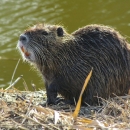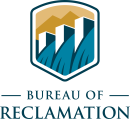States
Alaska, Colorado, Florida, Louisiana, Michigan, Minnesota, Montana, OregonEcosystem
Forest, Lake, Marine, Mountain, Prairie, River/streamSummary
Invasive species pose significant threats to ecosystems, economies, and public health. Land managers across North America know that smart invasive species invasive species
An invasive species is any plant or animal that has spread or been introduced into a new area where they are, or could, cause harm to the environment, economy, or human, animal, or plant health. Their unwelcome presence can destroy ecosystems and cost millions of dollars.
Learn more about invasive species management follows Ben Franklin’s dictum: “An ounce of prevention is worth a pound of cure.” Prevention has been shown to be the most cost-effective response with the greatest potential return.
Recognizing this, federal agencies and partner organizations are increasing collaborative efforts to address the challenge posed by invasive species and to inform the public about this critical work. The collaboration was formalized in 2019 through a memorandum of understanding, called the Nationally Coordinated Invasive Species Prevention MOU.
The MOU signatories include: U.S. Fish and Wildlife Service (2019), North American Invasive Species Management Association (2019), Wildlife Forever (2019), National Park Service (2019), Bureau of Reclamation (2022); and now, Bureau of Land Management, and Bureau of Indian Affairs. With the addition of BLM and BIA, the capacity of the collaboration is further amplified.
Narrative
Invasive species prevention efforts are most successful where partners collaborate across jurisdictional boundaries and leverage resources to maximize impact. This MOU stands as an example of the power of partnership, innovation, and foresight in addressing complex environmental and human challenges. By uniting behind a common purpose, the MOU partners are demonstrating the effectiveness of collective action to safeguard the nation.
The inception of the MOU heralds a new era of cooperation and coordination in combating invasive species. The partners seek to elevate national prevention efforts through collaborating and leveraging resources. Through leveraging collective expertise and resources of federal agencies and non-governmental organizations, the partnership is building a proactive framework for interjurisdictional prevention. By working together to raise awareness, the collaboration through this MOU is minimizing exorbitant costs to wildlife and humans, as well as agriculture, infrastructure, and tourism.
Since 2010 invasive species cost North America more than $26 billion per year, up from $2 billion per year in the early 1960s, according to a 2021 study (Crystal-Ornela, R. et al. 2021).
Beyond dollars and cents, this MOU engenders a sense of stewardship and collective responsibility with the public for the protection of our shared environment, fostering a legacy of conservation and sustainability that transcends political boundaries and partisanship.
Prevention not only minimizes the costs associated with invasive species management but also avoids the extensive environmental damages caused by their establishment. A proactive approach ensures ecosystems remain balanced and resources are preserved. While eradication can be challenging, prevention has a high rate of success. For this reason, prevention has become a cornerstone of priorities for agencies and organizations striving to protect natural resources.
Success stories
The MOU empowers signatories to identify and address emerging invasive species threats before they gain a foothold. Coordinated efforts are facilitating broader awareness and adoption of national prevention campaigns such as PlayCleanGo®, Clean. Drain. Dry.®, and Stop Aquatic Hitchhikers!.
These campaigns engage the public in stopping the spread of invasive species. The MOU partners collaborate to increase the availability of cleaning stations and tools across the country to prevent the movement of invasive species. They also facilitate the assessment of risks at water access points.
In northern Louisiana, the Service’s Black Bayou National Wildlife Refuge and Wildlife Forever are finalizing the development and implementation of an Access Enhancement Guide that identifies key measures to improve boater access to watercraft decontamination equipment. This equipment helps protect the refuge and adjacent water bodies to sustain for boating and fishing opportunities.
The National Park Service and the North American Invasive Species Management Association (NAISMA) are working together to install boot brush stations and signage at a handful of national parks across the country. The National Park Service is also funding the installation of boot brush stations and signage and distributing WorkCleanGo products.
Looking ahead
The MOU’s success provides a solid foundation upon which to build greater resilience against invasive species threats. Partners are identifying and prioritizing opportunities to stay ahead of evolving invasive threats and support biosecurity.
For example, by participating in events like National Invasive Species Awareness Week (February 24-28, 2025), the MOU partners will boost public awareness of the costs of invasive species and promote measures to prevent their spread. This will better equip individuals and communities to proactively address the threat of invasive species.
Join the events
The MOU partners encourage communities to take action to Stop Invasive Species In Your Tracks®. Everyone can take action today by learning how to
- identify invasive species
- clean gear and equipment after outdoor activities
- report invasive species sightings to local authorities
- spread the word about prevention practices.
Together, we can build a united front to protect our ecosystems and ensure a thriving future for our natural and economic resources.
To learn more, contact Aaron Martin (aaron_e_martin@fws.gov, 907-378-0568), the U.S. Fish and Wildlife Service’s national invasive species program coordinator for the National Wildlife Refuge System, or any of the invasive species program managers of other MOU partner organizations.








